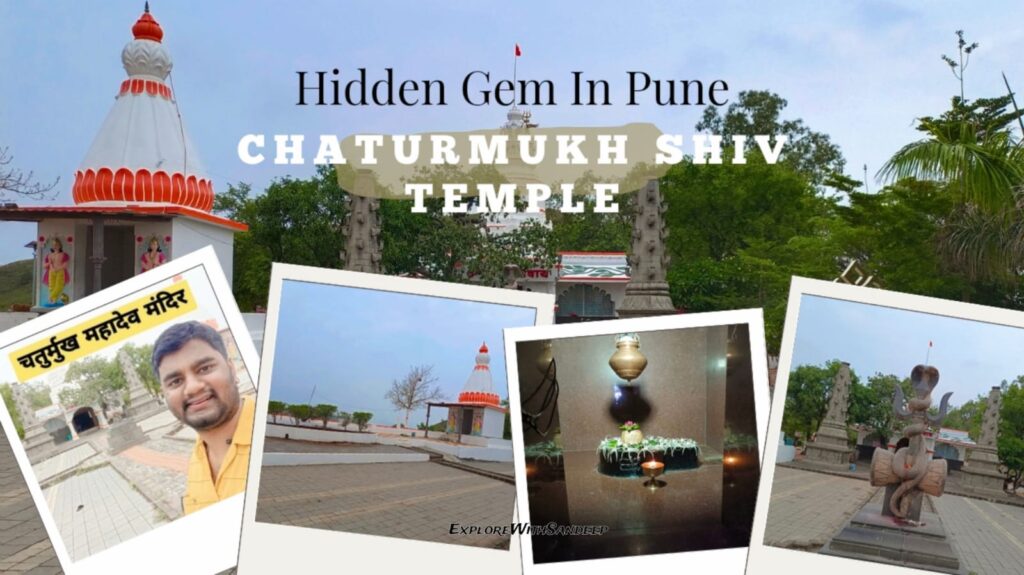Chaturmukh Temple
Chaturmukh Shiv Temple, located in Darewadi, just 25 km from Pune city, is a hidden treasure dedicated to Lord Shiva. Initially a small shrine, the temple has grown over time, thanks to the collective efforts of devotees and local people from nearby villages. Surrounded by a variety of trees, the temple complex also includes a Datta Mandir and the origin of the Karha River (कऱ्हा नदी).
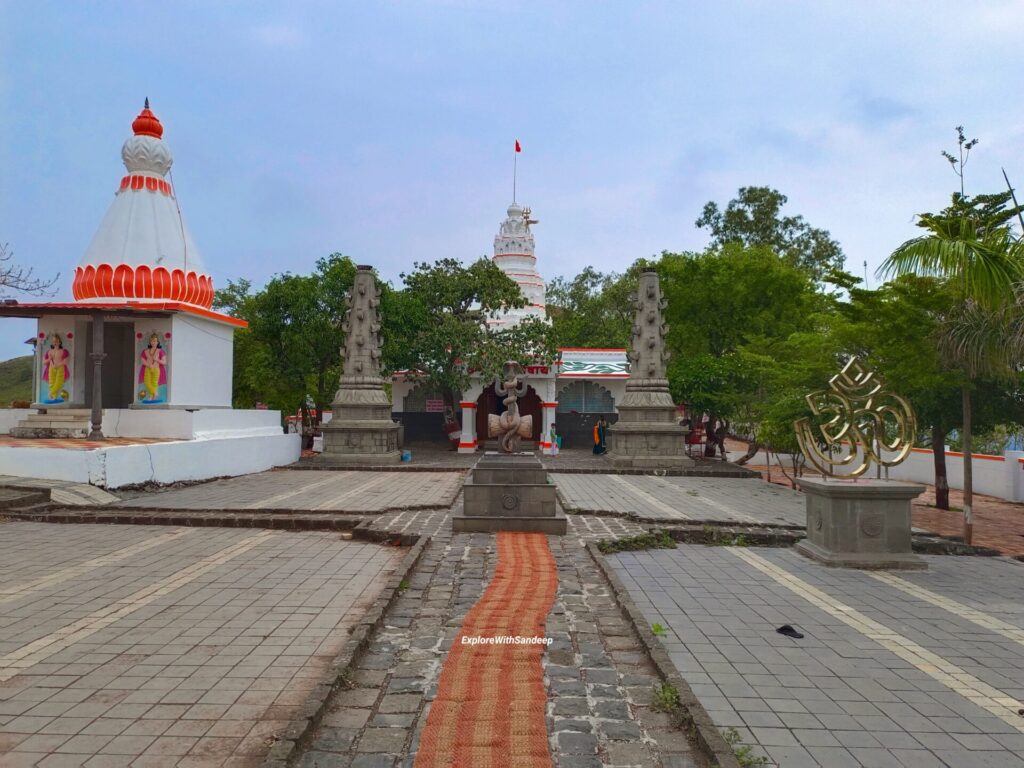
chaturmukh Temple History
Chaturmukh Shiv Temple sits on a small hill known as Patharwadi, or Karha Hill, due to the Karha River (कऱ्हा नदी) originating here. The hill is also referred to as Brahmagiri Hill, named after Lord Brahma Dev, who is believed to have meditated here.
The temple is surrounded by hills on all four sides, adding to its calm and quiet ambiance. Its importance is also tied to the epic Mahabharata. During their exile, the Pandavas visited Pandeshwar village near Purandhar but had difficulty finding water. They asked for help from Lord Krishna, who informed them about Brahma Dev’s meditation on a nearby hill. Krishna revealed that Brahma Dev’s kamandal (कमंडल) contained the waters of 107 rivers, and during the abhishek (ritual bathing) of Lord Shiva, this water would spill and create a small stream. This stream is known as the origin of the Karha River (कऱ्हा नदी).
This makes the Chaturmukh Temple a special and holy place for Lord Shiva’s devotees. The mix of natural beauty, historical importance, and spiritual feel makes it a must-visit for anyone looking for a unique and peaceful experience near Pune.
Chaturmukh Temple Journey
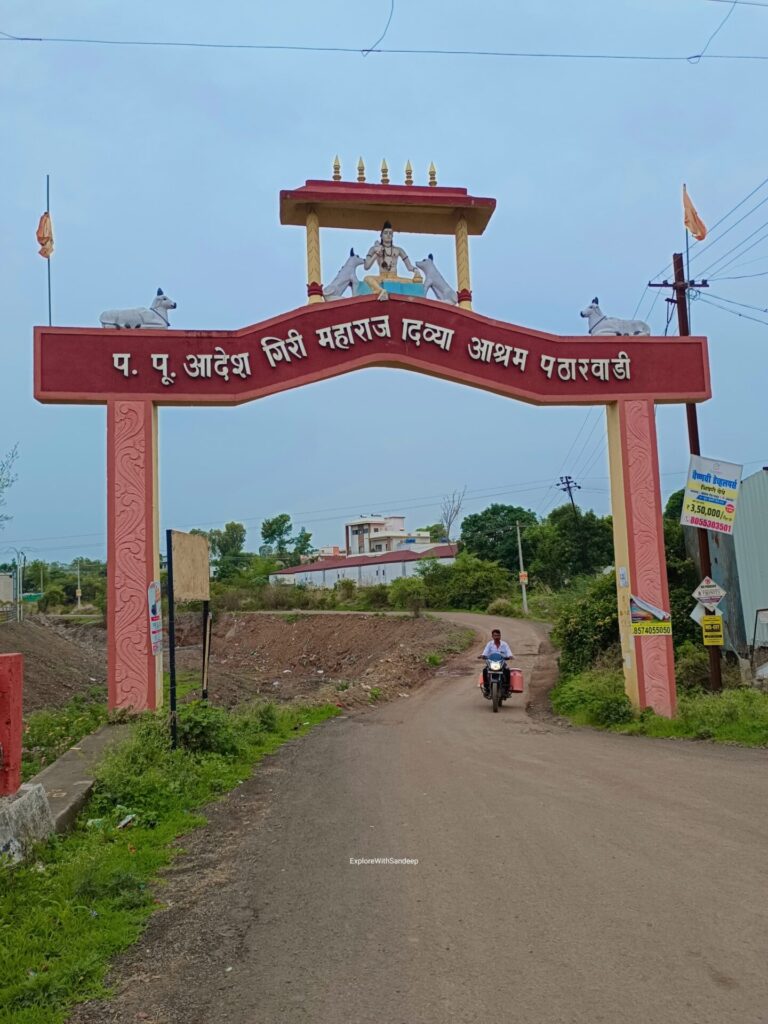
It’s been a while since my friend shared a photo of the Chaturmukh Shiv Temple on social media. Since then, I’ve been eager to visit it, but between work and family stuff, I never got the chance. Earlier today, when I was considering where to visit, the temple popped into my mind. It was exciting to finally visit and explore its beauty, so I called my friend for directions.
I started my journey around 7 am, using Google Maps to guide me. It wasn’t too far from where I live, so that was a plus. After about 20 minutes of riding, I reached the entrance gate of Pathar Wadi. It’s right off the main Saswad Kondhwa road, near the Amrai 69 Hotel. Before heading further, I snapped a quick pic of the gate – a little memento of the start of my adventure. Thanks to our partners, you can find online to suit every preference and budget, from budget to top-of-the-range super stylish models.
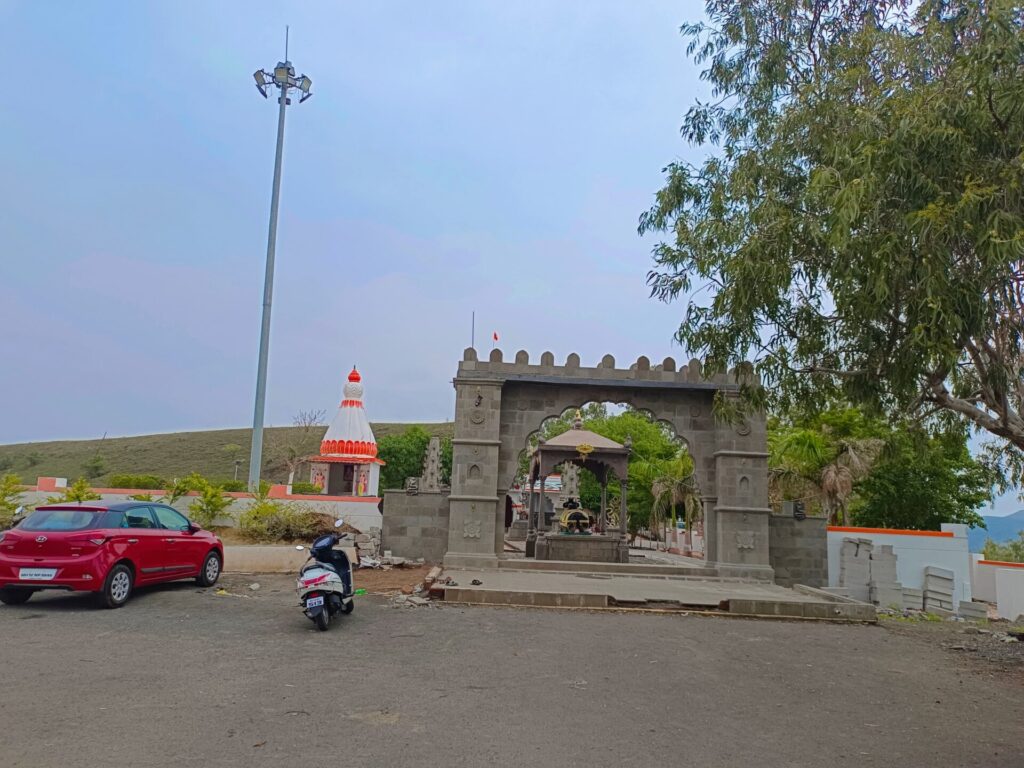
The road was a bit rough for the first 2 km, but it smoothed out after that. I came across a small bridge over a lake, and let me tell you, the view was amazing! Trees and greenery all around, with the water adding to the beauty.
Next stop was Patharwadi village, the starting point for reaching the Chaturmukh Temple. You could see the temple clearly from there. The road from the village to the temple took me through a small ghat, surrounded by trees. Even though it was raining a bit, the green hills looked stunning.
Finally, I reached the temple parking lot, right by the main road. I parked my bike and headed towards the temple.
Exploring chaturmukh Temple
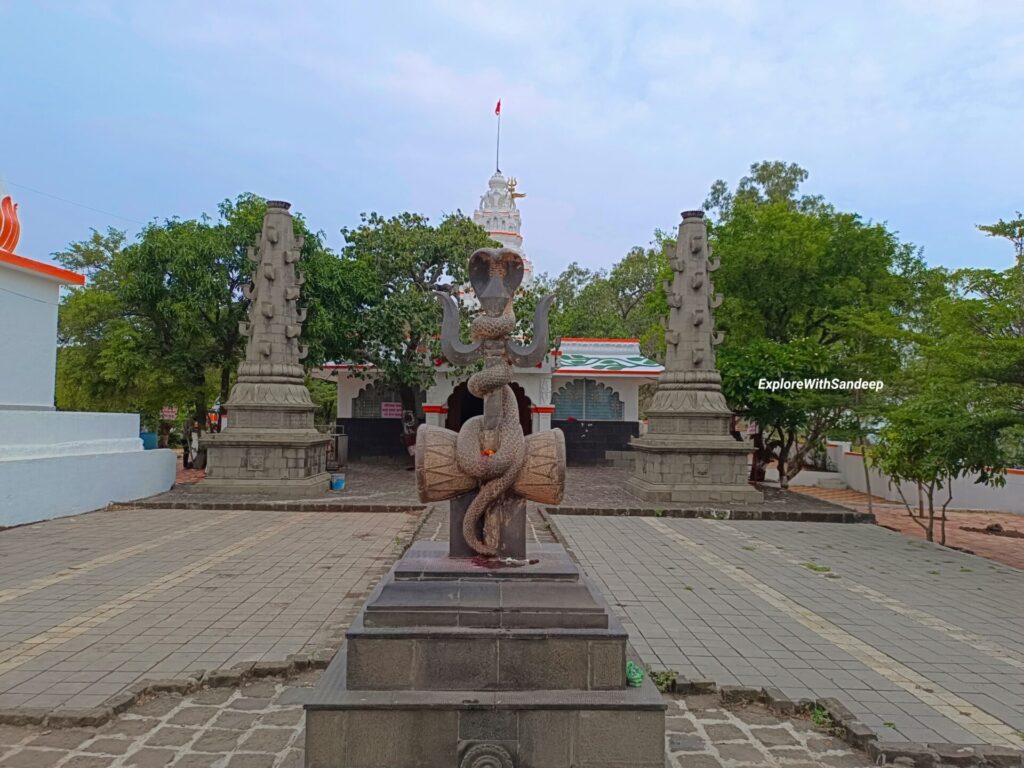
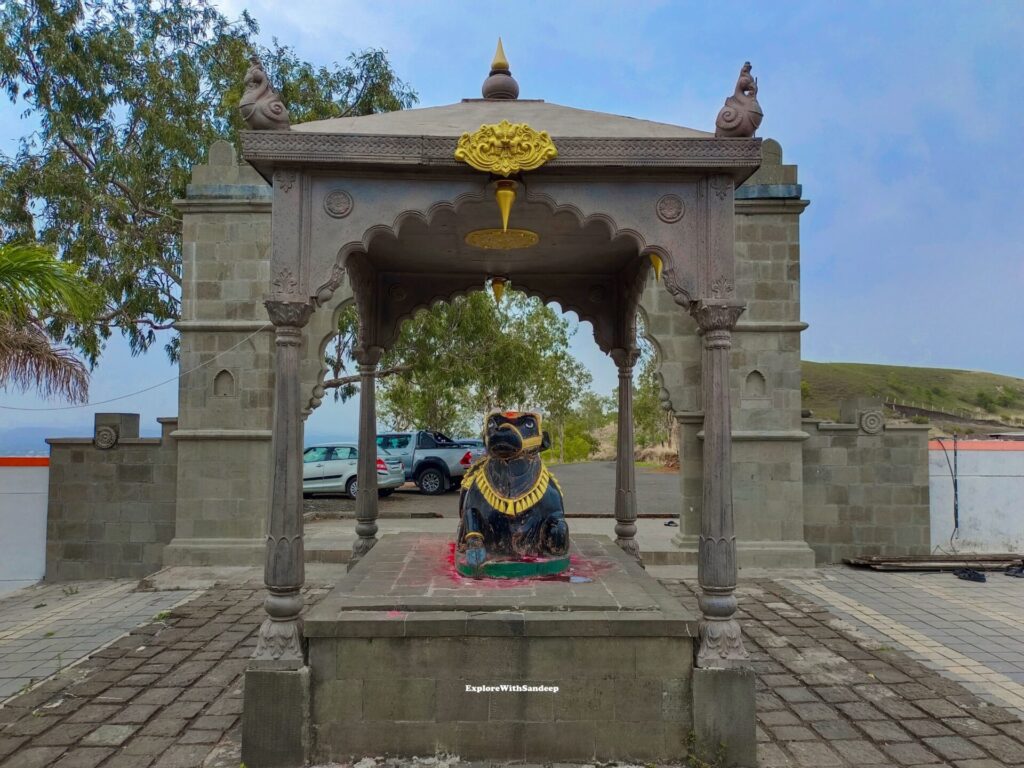
As I stepped into the temple, the first thing I noticed was a huge statue of Nandi, the sacred bull, looking towards Lord Shiva. It was painted in striking black and yellow, making it stand out beautifully. But it wasn’t just the main temple that caught my eye – even the walls of the smaller shrines and the compound were painted in vibrant colors like white, red, and green. These colors made the temple visible from far away, adding to its charm.
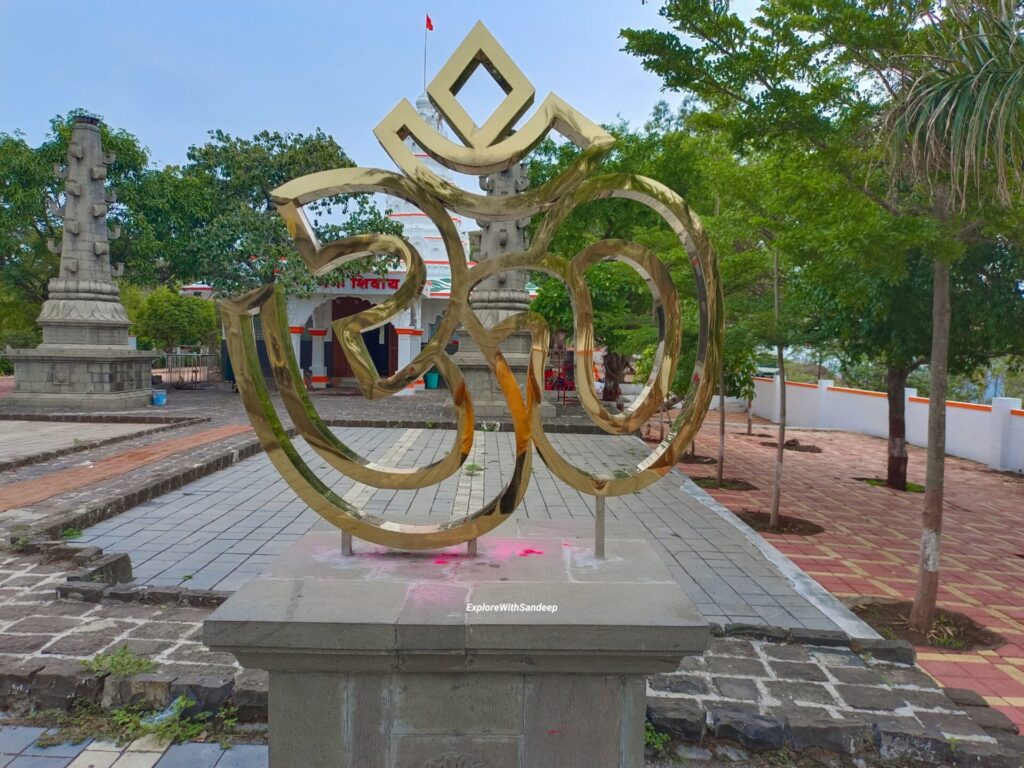
As I walked further, I saw more interesting things. There were statues of Lord Shiva’s symbols like the Damru and Trishul, and even a snake statue. And on the left, there was a big metal “OM” symbol. Seeing all these things together gave me a feeling of devotion and peace. The “OM” symbol is really special – it represents sacred sounds and prayers in Hinduism, Buddhism, Jainism, and Sikhism. It reminded me of similar symbols I’ve seen at other holy places, like Kedarnath Jyotirlinga. Being surrounded by these symbols and colors made my visit to Chaturmukh Shiv Temple even more meaningful and spiritual.
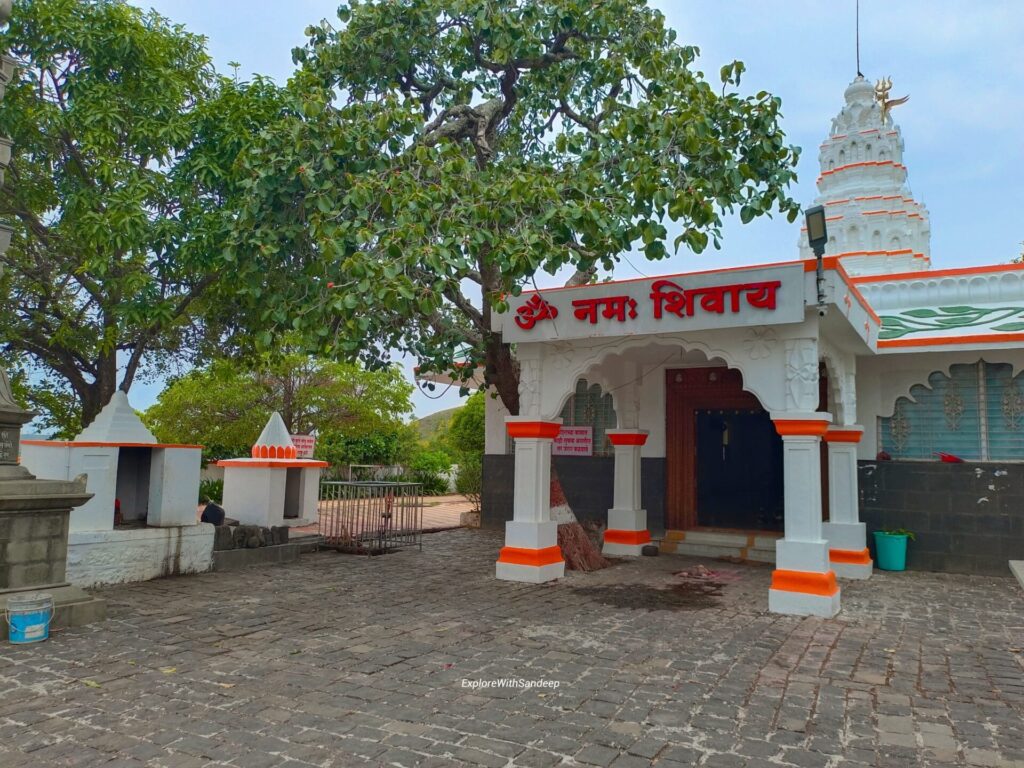
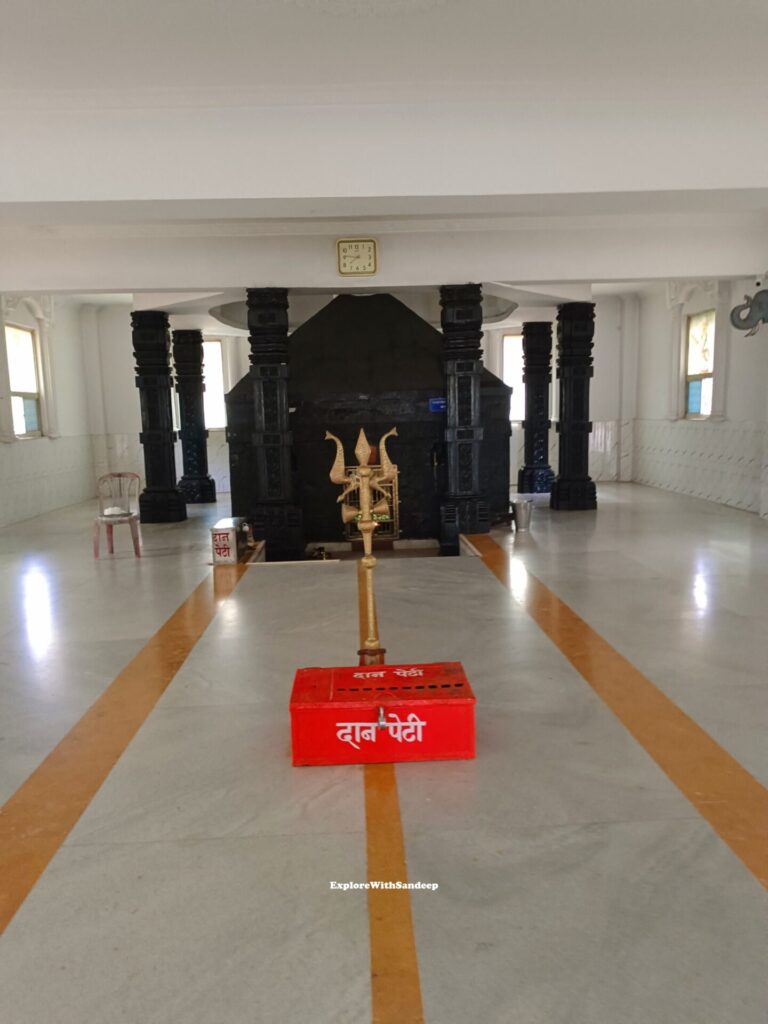
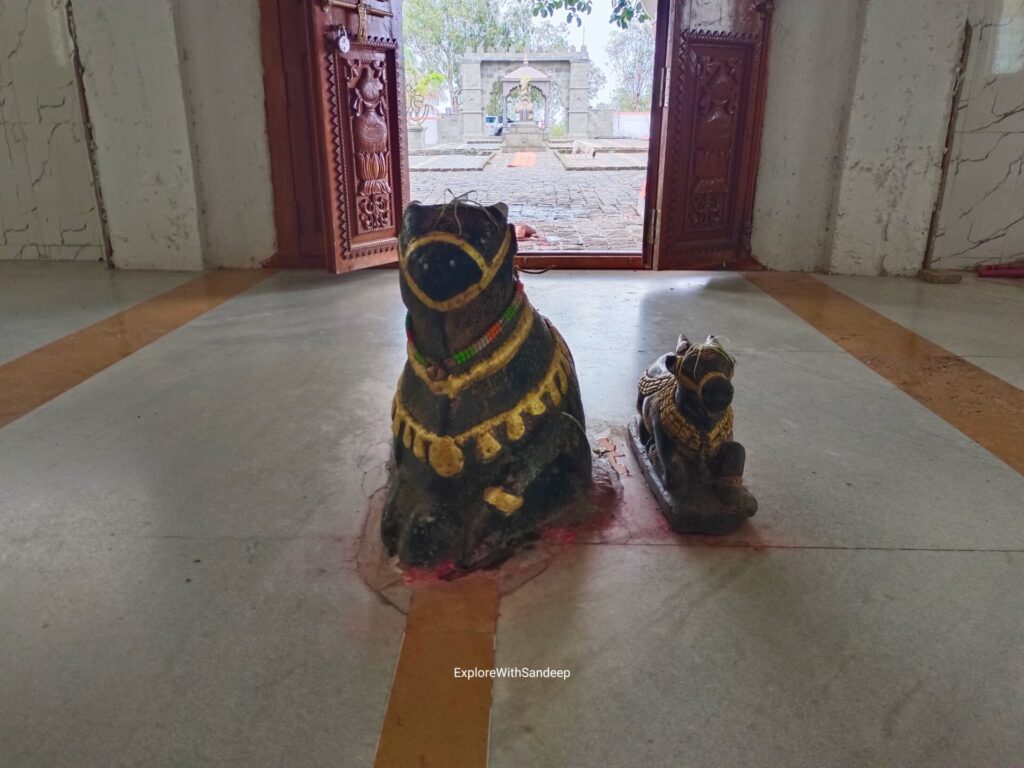
Continuing my journey through the temple, I noticed the words “ॐ नमः शिवाय” written on the entry wall, welcoming visitors with a sacred chant. Stepping inside, I found a spacious passage where devotees could sit and meditate after seeking the blessings of Lord Shiva. In the heart of the temple, a smaller shrine housed the revered Shivling, surrounded by statues of Nandi Maharaj and offerings like a trishul and a donation box for maintenance funds.
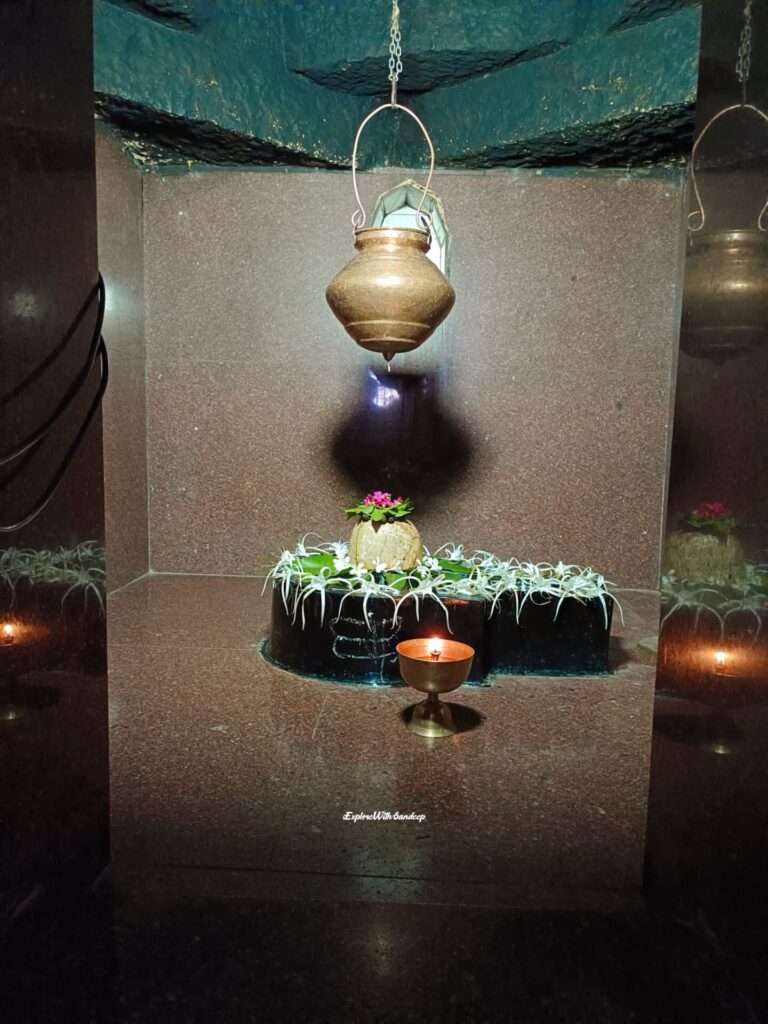
Though the main temple was small, its sanctity was clear. Devotees weren’t allowed inside, but the peaceful feeling outside filled me with a sense of calm. Above the Shivling, a small kalash (पानी का घड़ा) continuously dripped water, symbolizing purity, while a oil lamp cast a serene glow, making the temple even more beautiful.
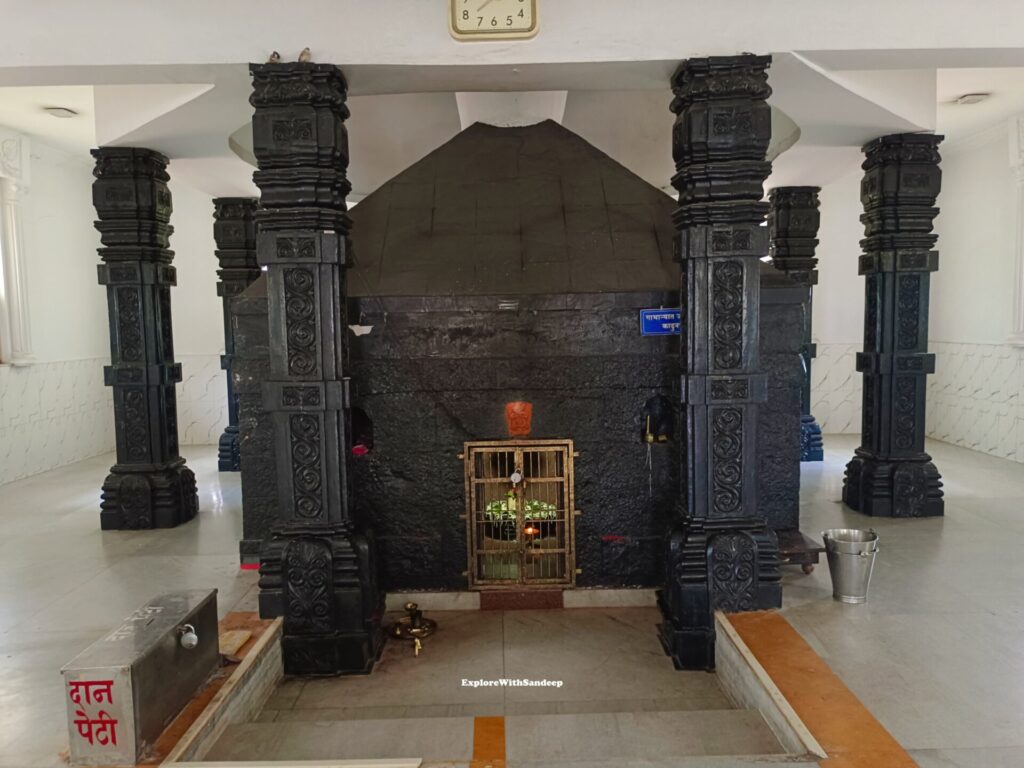
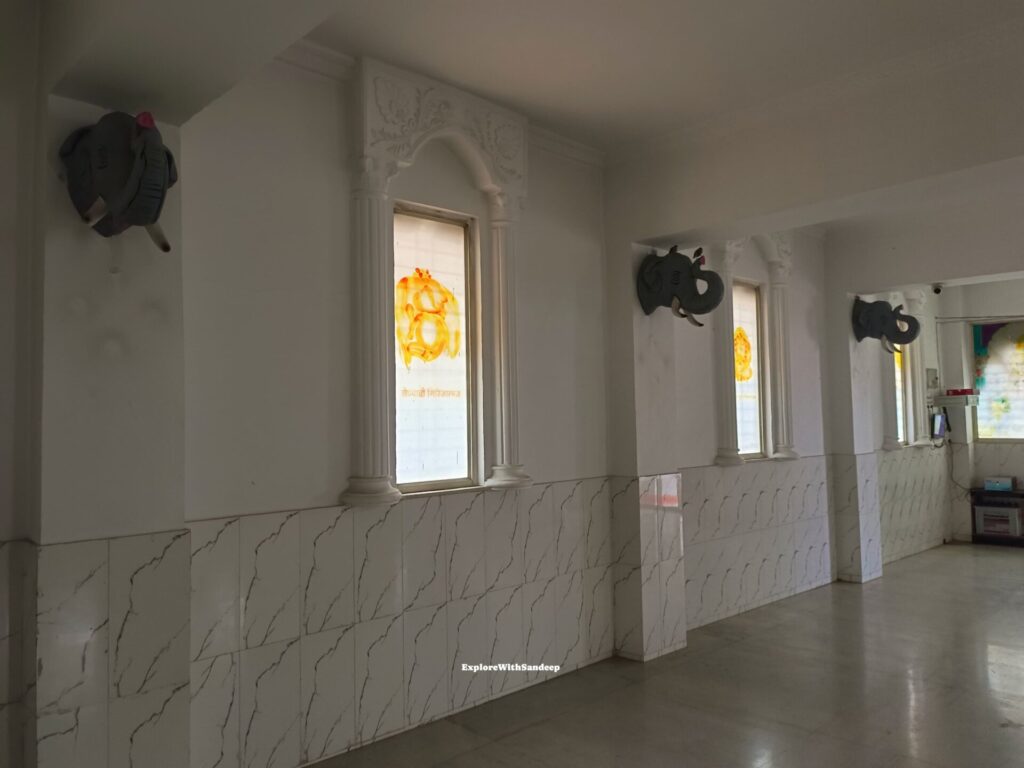
Outside, I noticed six wooden pillars, intricately carved with mesmerizing designs. Initially, I mistook them for concrete, but upon closer inspection, their wooden texture added to their charm. Each pillar stood as a testament to the craftsmanship and devotion that adorned every corner of Chaturmukh Shiv Temple, leaving me in awe of its beauty and peaceful atmosphere. I noticed elephant-headed statues, known as “गज मुख” placed on both sides of the walls.
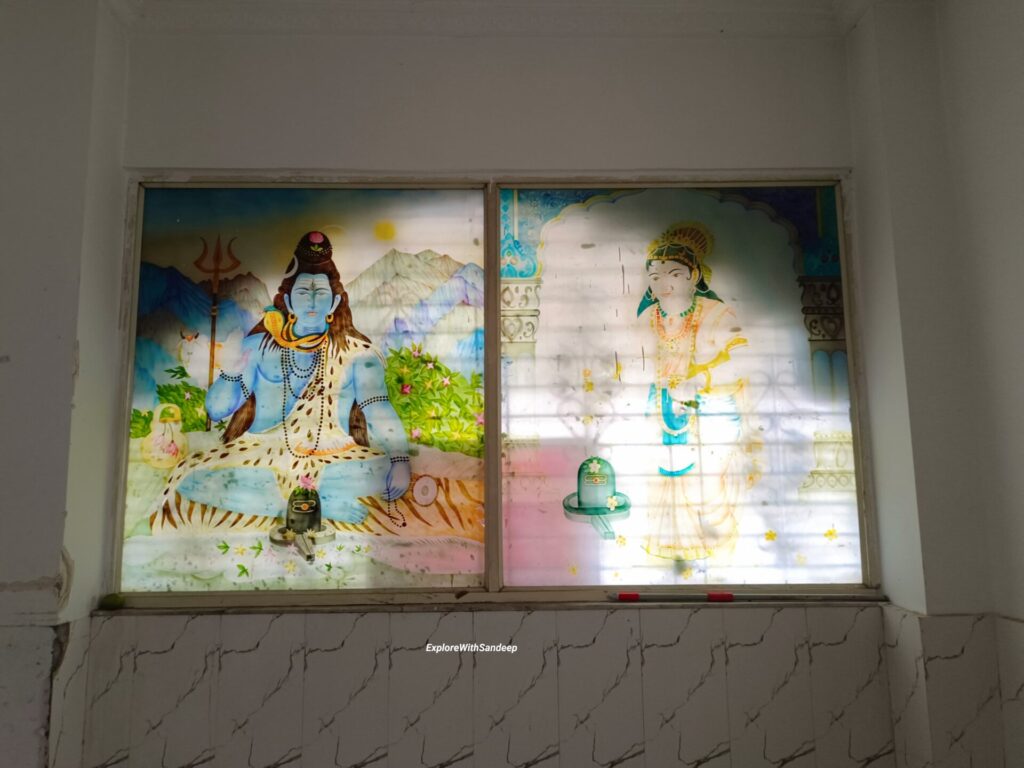
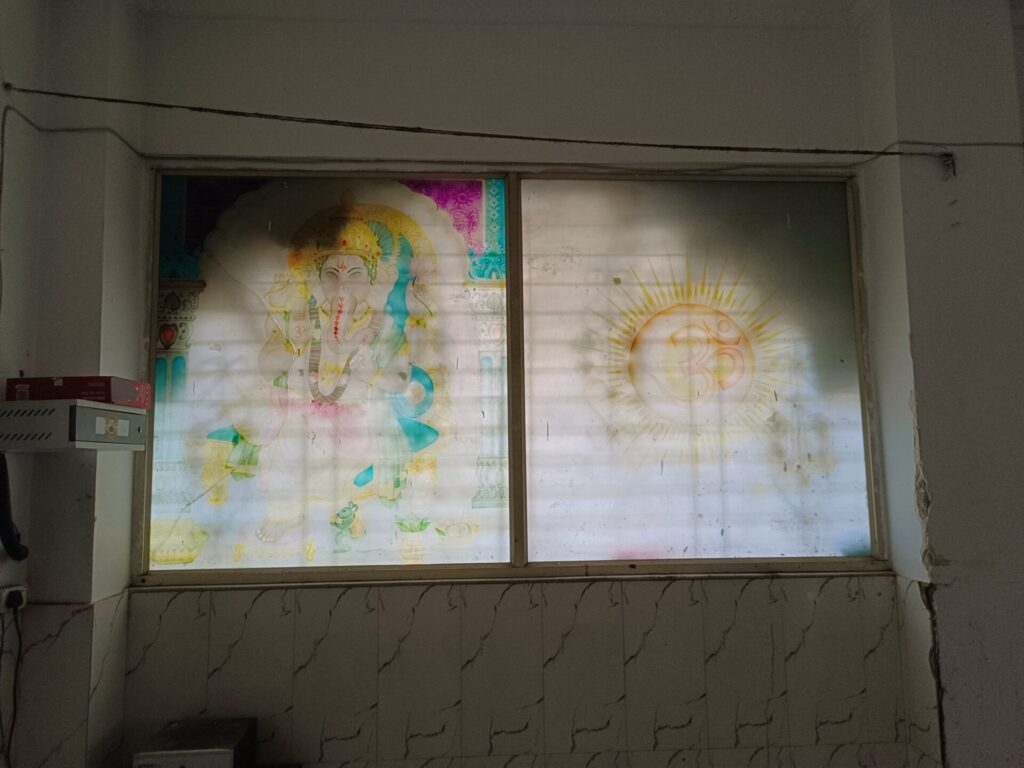
The windows were adorned with paintings of Astavinayak Ganpati, and the main window showcased images of Shiv Parvati and Lord Ganesh, creating a spiritual ambiance.
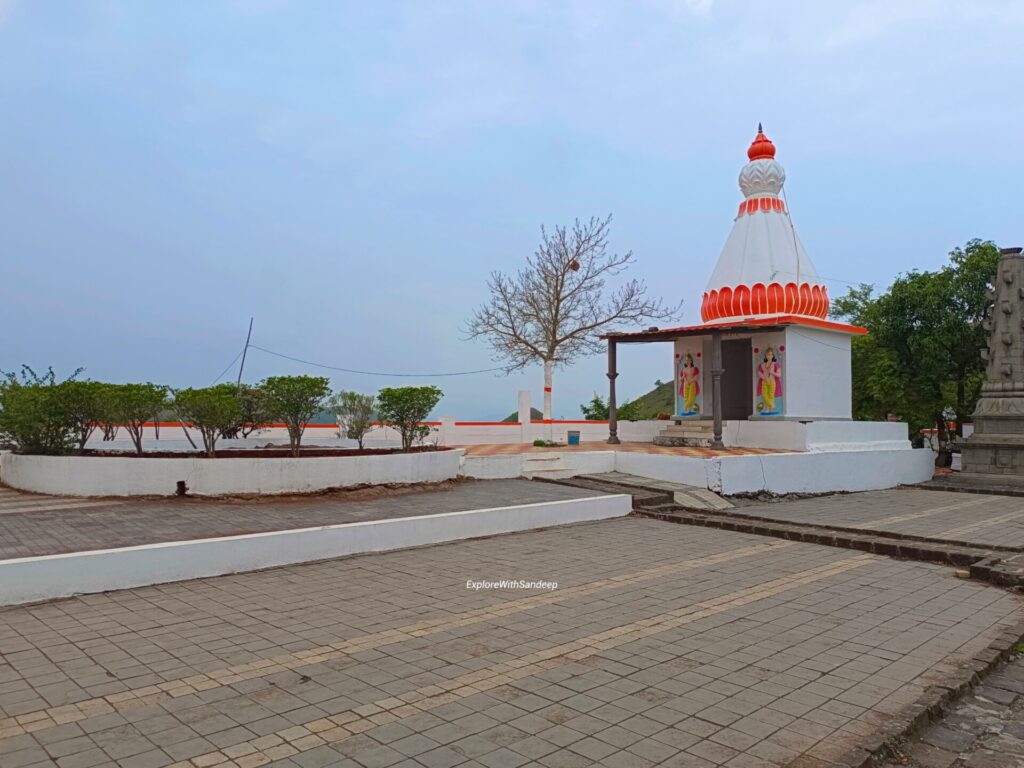
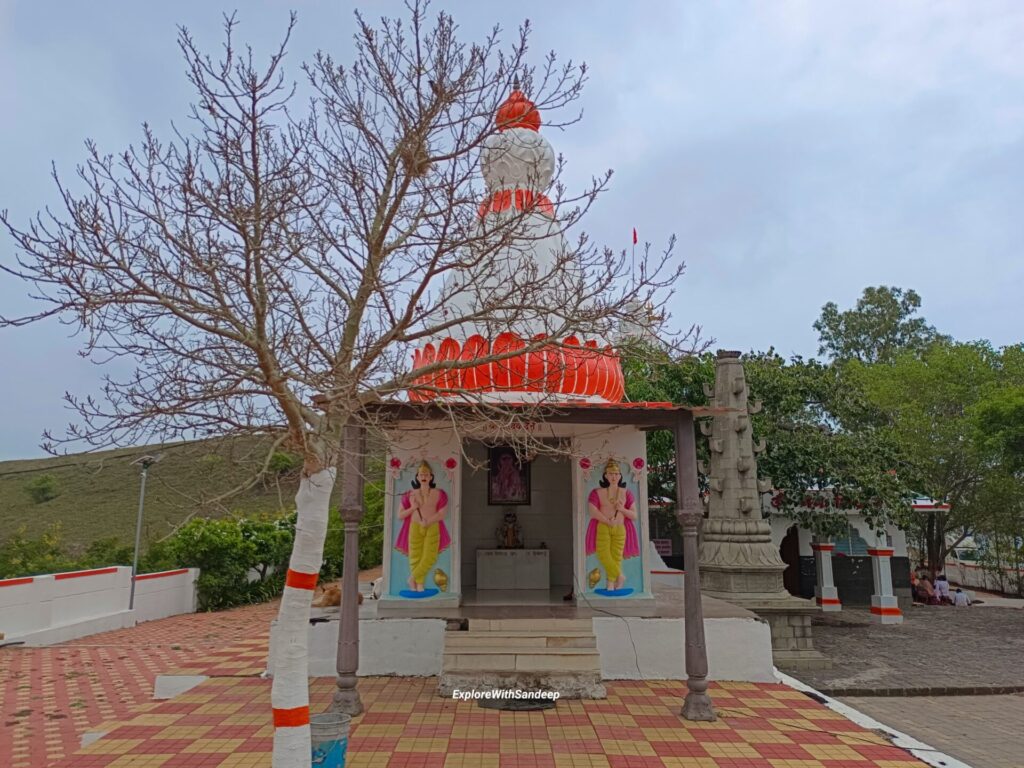
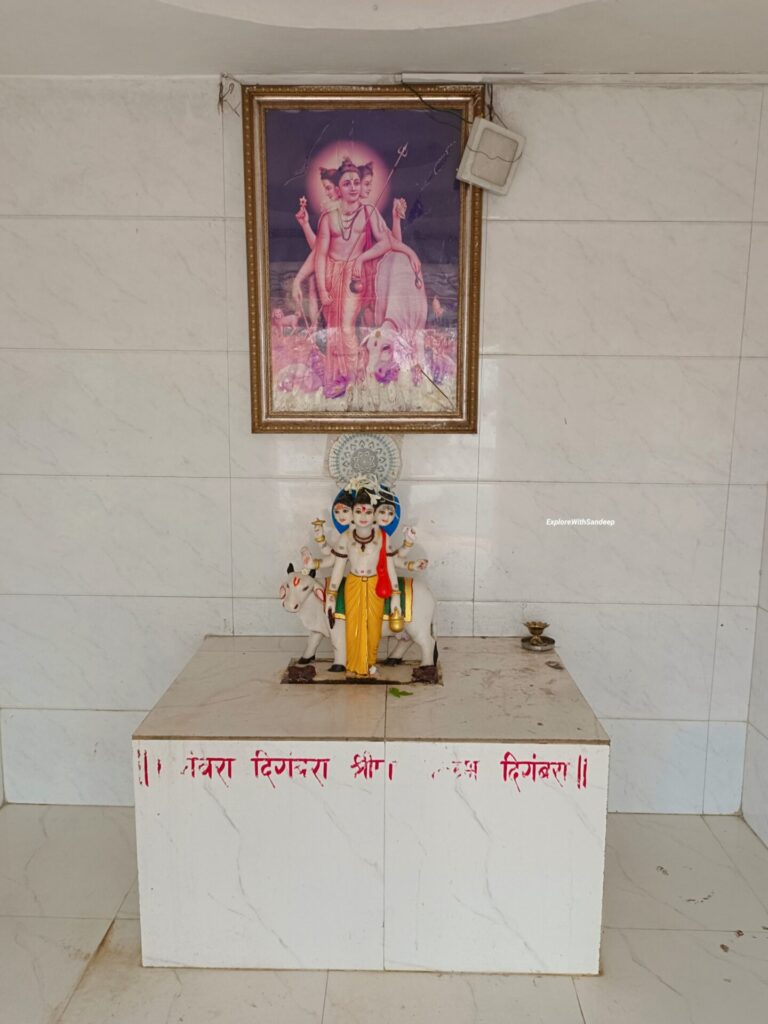
After receiving blessings inside, I explored the temple premises. I found a small Datta temple painted in white, with two droppal statues at the entrance, seemingly welcoming devotees.
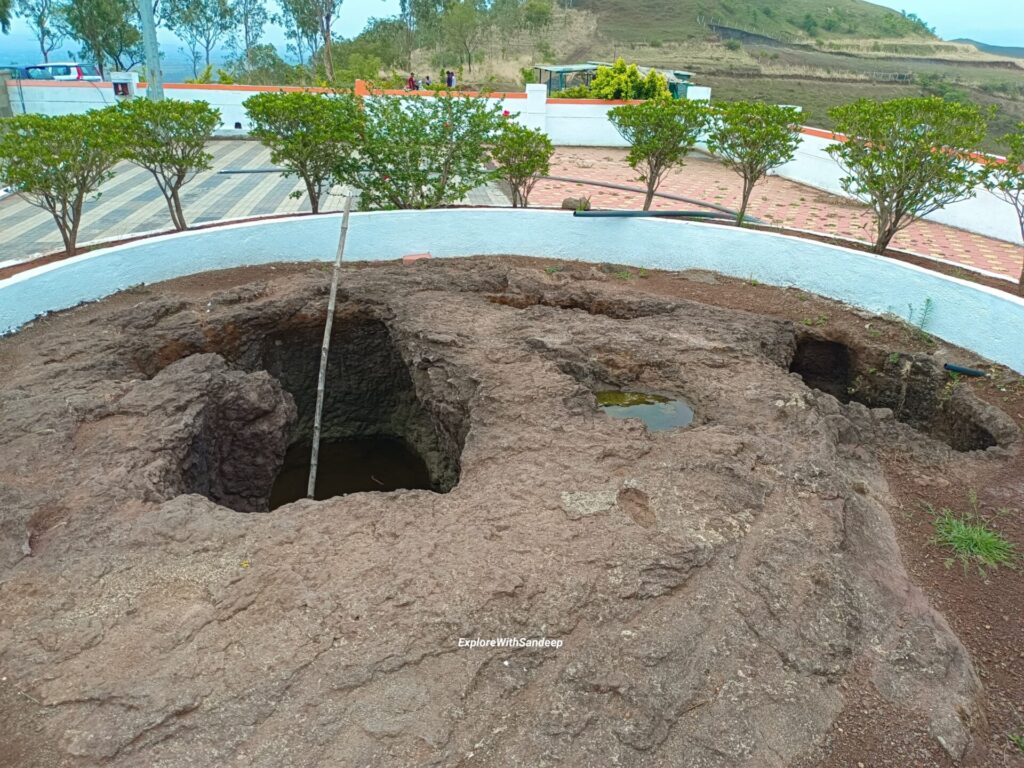
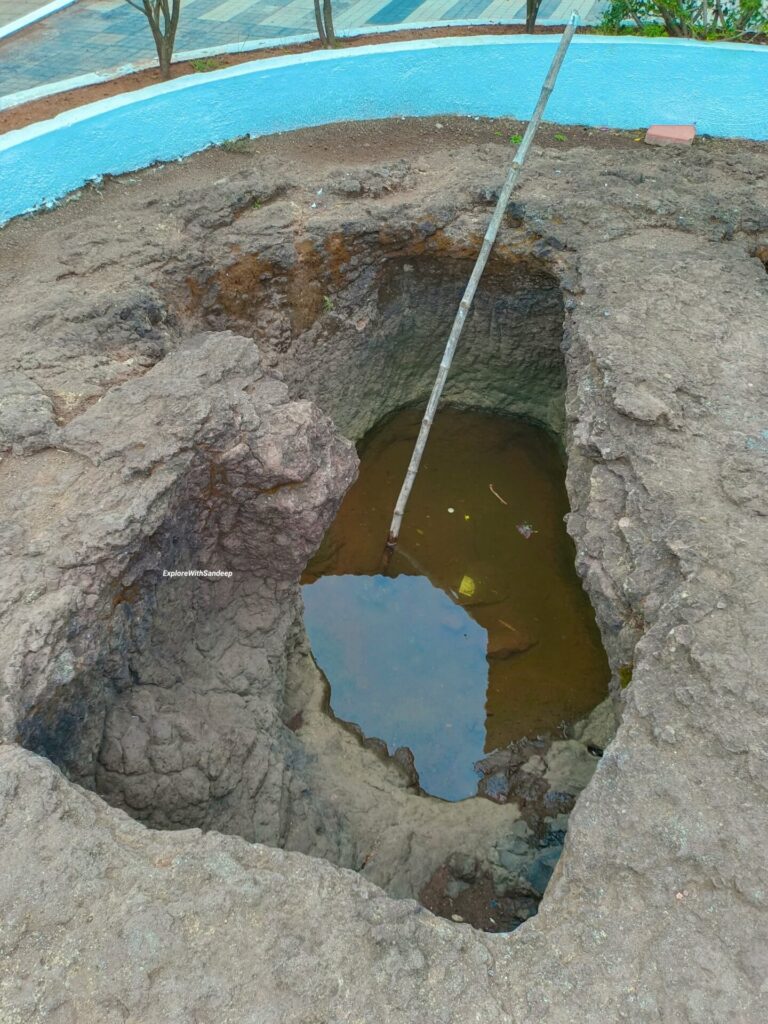
I received blessings from Datta and then stumbled upon a small rock with three holes, offering a clear view of the origin of the Karha river, which was a fascinating sight for me as I had never seen the origin of a river before.
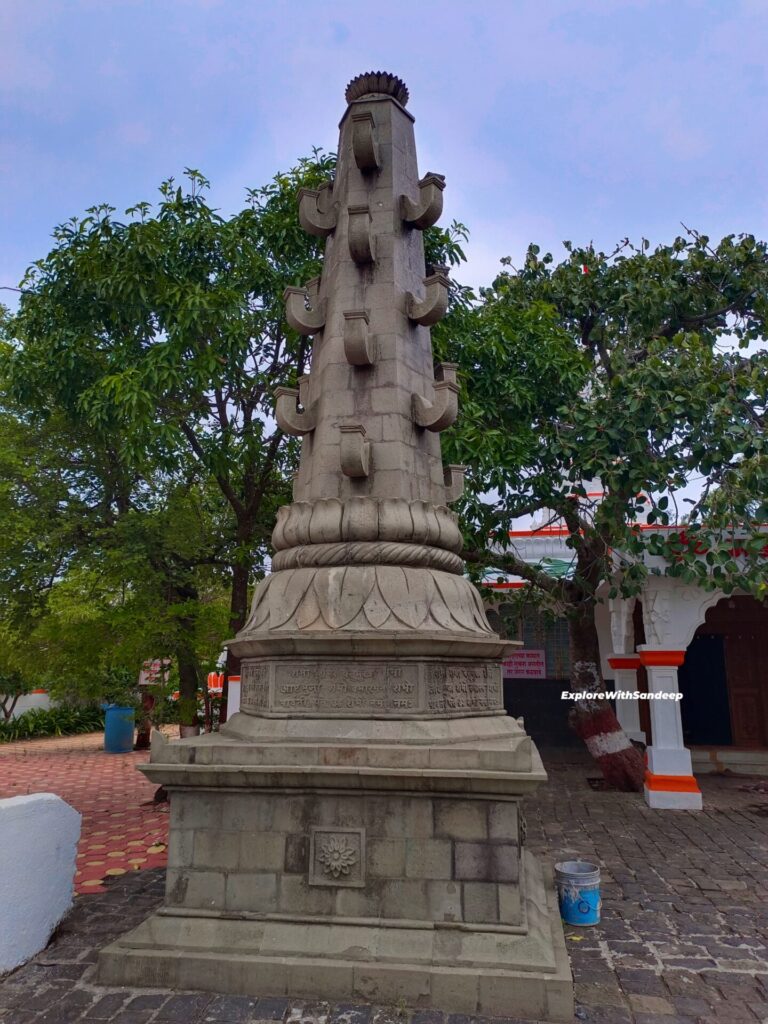
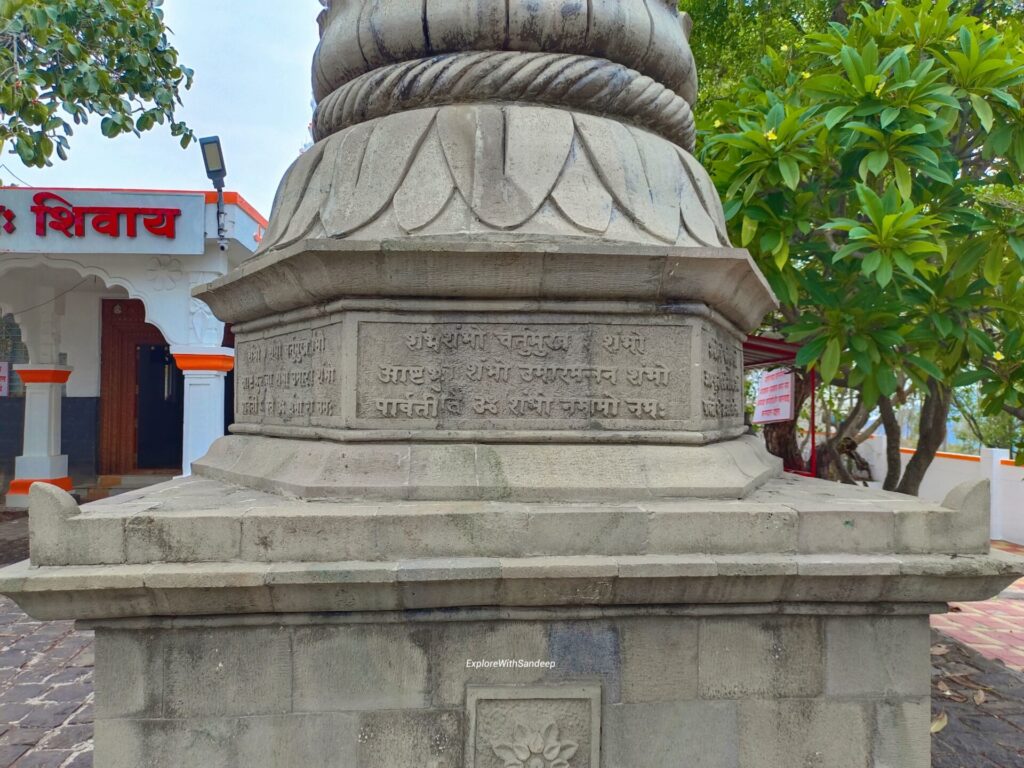
Moving forward, I noticed two Deepmala (दीपमाला) structures used for lighting lamps, indicating that the temple was newly constructed. The Deepmala had Shiv Strotam written on all sides and was usually lit during Mahashivratri or other special occasions.
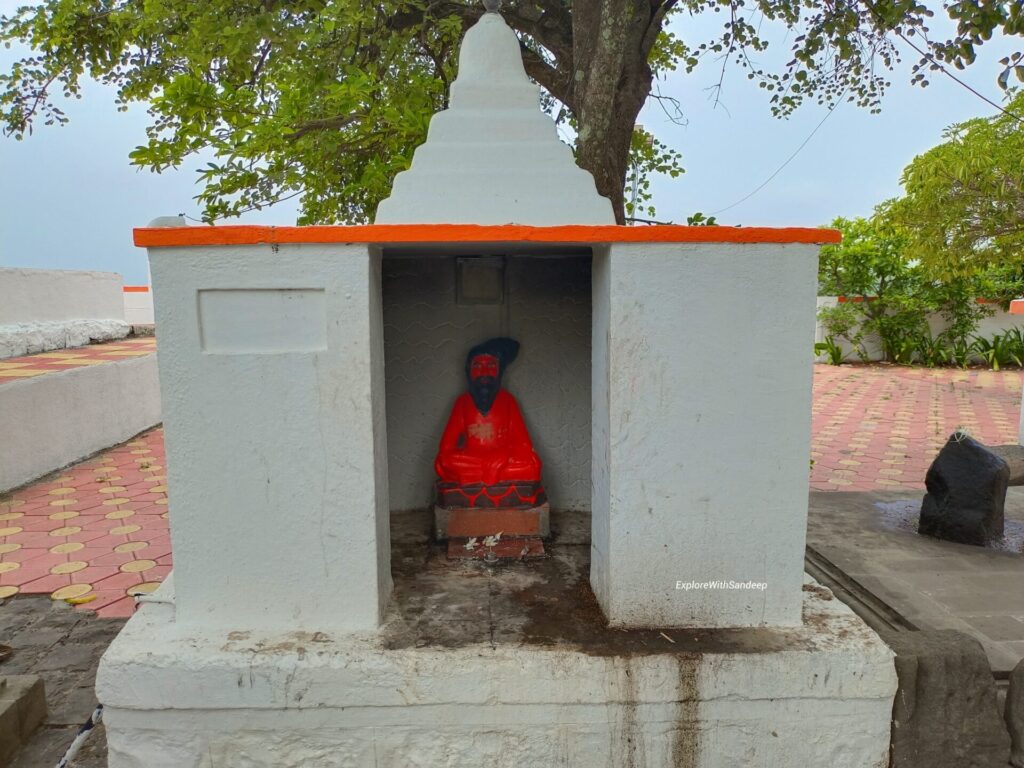
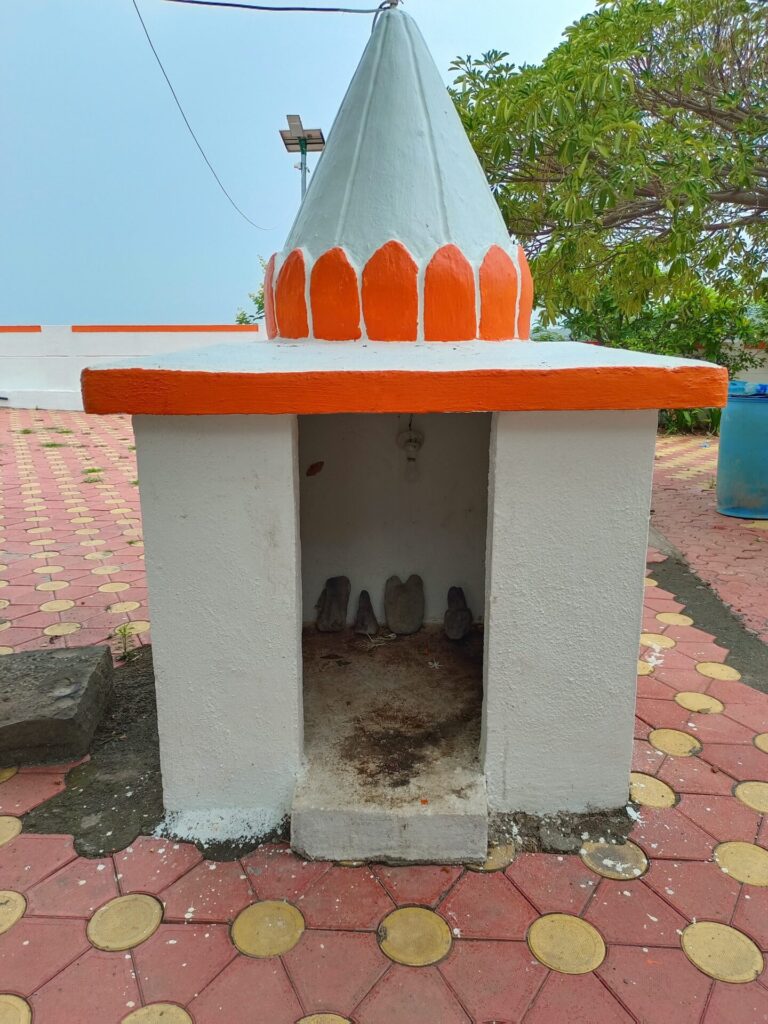
Nearby, there were two small temples dedicated to Jatibaba and Shrungar krushi. These caught my attention as I had never heard of these Rushi Muni (ऋषि मुनि) names before. I received blessings from them before returning to the main temple.
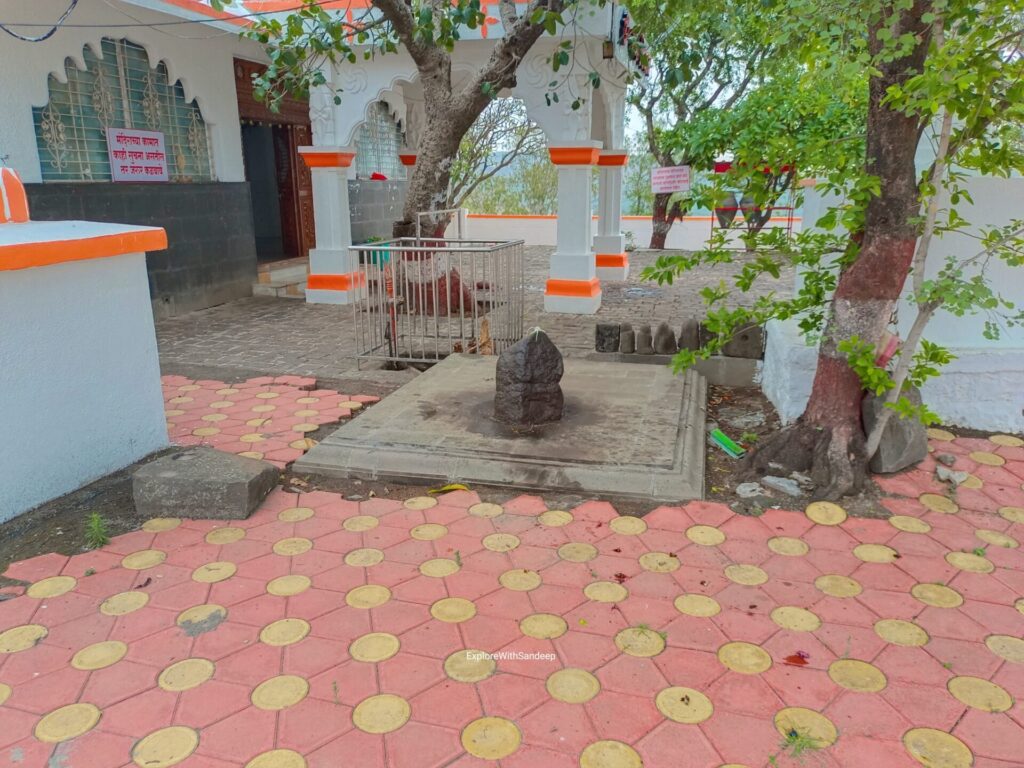
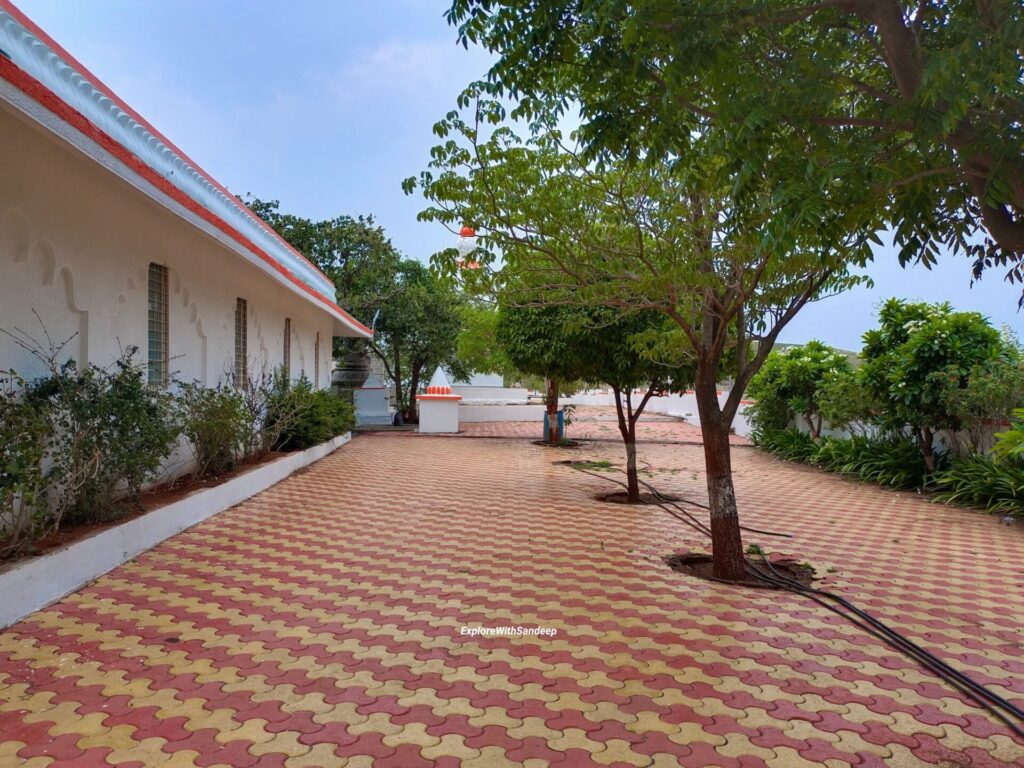
After feeling the temple’s spiritual vibes, I wandered to the back. From there, I saw the charming villages of Shivapur and Shindewadi, surrounded by hills. In the distance, the imposing Singhgad fort caught my eye. With a happy heart, I began my journey back home, taking with me the beauty of the scenery I had witnessed.
How to reach chaturmukh temple
Kondhwa and Bopdev Ghat (25km): Embark from Pune and head towards Kondhwa, then continue your journey through Bopdev Ghat. Enjoy the breathtaking route spanning 25km until you arrive at Chaturmukh Shiv Temple in Patharwadi.
Saswad to Patharwadi (20km): Start your picturesque journey from Saswad to Kodit and then onto Patharwadi. Covering a distance of 20km, this route offers tranquil countryside views before reaching Chaturmukh Shiv Temple.
via Shivapur (35km): Commence your journey from Pune via the Pune-Bangalore Highway towards Shivapur. From there, proceed to Patharwadi, covering a distance of 35km to reach Chaturmukh Shiv Temple.
Timining and Entry fees
You can visit the Chaturmukh shiv Temple every day from 5:00 AM to 9:00 PM, and there’s no charge for parking or entry.
Conclusion
Visiting Chaturmukh Shiv Temple was amazing—it’s a mix of spirituality, history, and beautiful nature. Every part of the temple is special and leaves a strong impression. If you’re looking for a unique experience, don’t miss out on this hidden gem!

